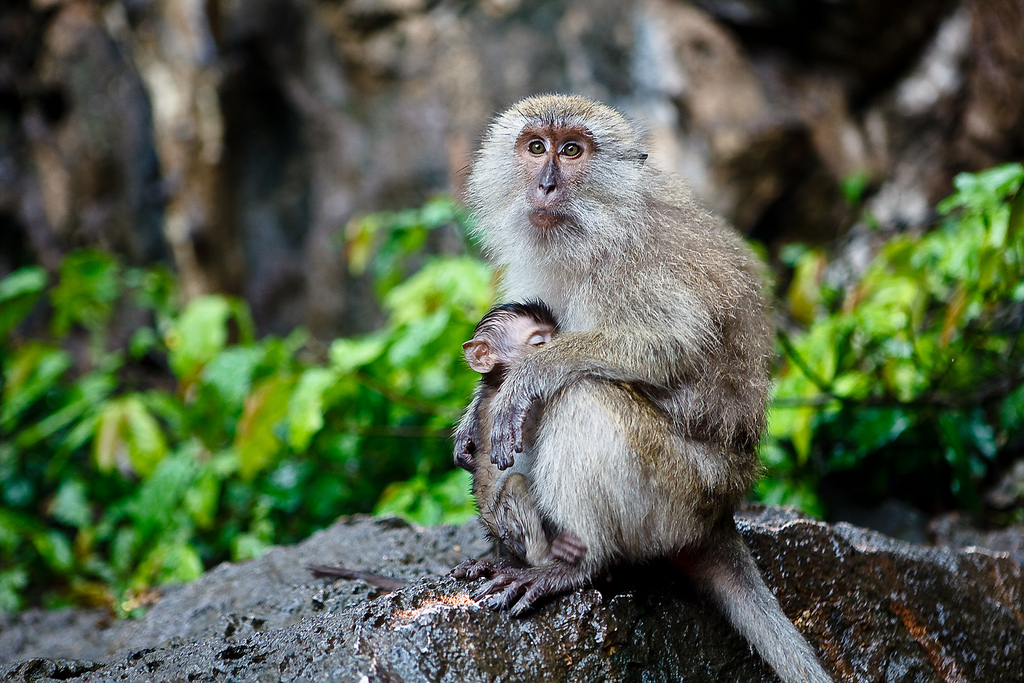“We only planned to seize a vehicle but it turned out we saved many macaques,” explained a senior police officer.
The Covid-19 pandemic continues to be taking its toll on countries across Southeast Asia, but that hasn’t stopped wildlife traffickers from trying to smuggle endangered and “exotic” species across borders.
The other day, for instance, police officers in a rural part of Thailand gave chase to a stolen pickup truck with fake license plates, forcing its driver to stop, only to discover the truck was carrying scores of macaques destined for dinner tables in China as exotic food.
“We only planned to seize a vehicle but it turned out we saved many macaques,” explained a senior police officer who specializes in recovering stolen vehicles.
“[A] search of the truck’s covered bed revealed a shocking sight: 88 macaques alive in deteriorating condition in plastic cages, and another 14 dead,” a Thai newspaper reported.
The driver, a 25-year-old man who had already delivered two shipments of macaques before he was caught, told police he had been paid the equivalent of $100 to transport the animals to a Thai border province from where the animals were to be smuggled into Cambodia.
From Cambodia the primates were then to be smuggled as exotic food into China where the meat of monkeys has long been viewed as a rare delicacy by many locals.
For centuries a whole host of animals from mice to bats, from pangolins to civet cats and from shark fins to bear paws have been served in China as exotic dishes, called ye wei (“wild flavors”) locally. In traditional Chinese medicine the meat and other parts of these and other animals are also credited with curative properties.
Despite periodic crackdowns by local authorities, the practice of eating the meat of rare and exotic animals continues to remain well-entrenched. Many of the animals for the domestic wildlife market in China are sourced as far away as Africa, but most animals come from the tropical nations of Southeast Asia.
“Southeast Asia is a wildlife trade hotspot, functioning as supplier, consumer and a general import-export emporium,” explains the Worldwide Fund for Nature (WWF).
However, vast numbers of protected species are traded inside Southeast Asian countries and between them to serve as pets, sources of food and ingredients of traditional medicine, among other uses.
“A large proportion of this [illegal] trade is domestic and does not cross international boundaries – for example, products such as medicinal plants, charcoal, wild meat and fisheries – and therefore is outside the potential scope of the Convention on International Trade in Endangered Species of Wild Fauna and Flora (CITES),” WWF notes.
Complicating conservation efforts in the tropical region is that many locals, including indigenous communities, consider bushmeat a normal part of a traditional diet.
“For many people, wildlife is an important source of protein,” WWF notes. “However, in recent decades, growing human populations, unsustainable harvesting and illegal activities have put additional pressure on these resources.”
This story first appeared on Sustainability Times
South Africa Today
© 2021 Sustainability Times.
This article is licensed under a Creative Commons Attribution-ShareAlike 4.0 SA International License.












